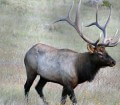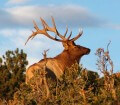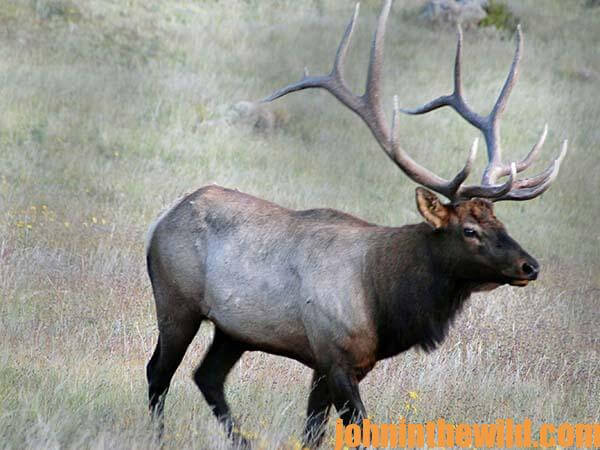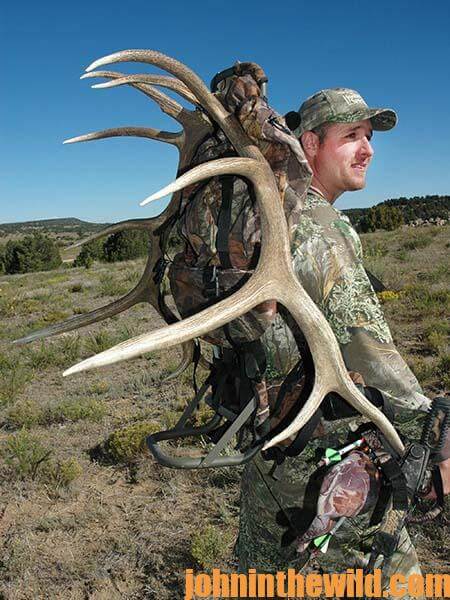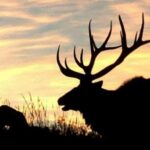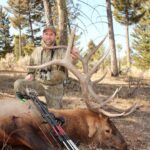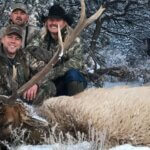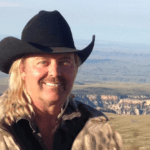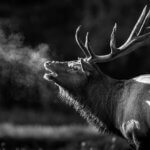John’s Note: J.R. Keller has lived in Colorado most of his life. During hunting trips with his father, Keller realized a passion for turkey hunting, which consumed most of his free time. Keller soon became an avid turkey caller and has won numerous turkey-calling competitions, besides elk-calling contests. Known for his knowledge of hunting elk, turkeys, mule deer and waterfowl, Keller has appeared on many TV shows. 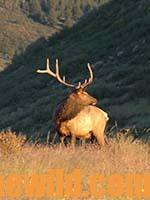
John E. Phillips: What is your first tip for taking bigger bull elk?
Keller: The first tip is to know where the elk are. Find a good area that will hold elk consistently, from year to year. You should do a lot of pre-season scouting to figure-out where these elk are within the areas you plan to hunt. The longer you hunt in a region, the more you’ll learn about that land, and the better you’ll be able to pattern the elk in that area. The most-difficult elk hunt you’ll ever go on is when you go into a place you’ve never hunted before. You won’t know where the elk should be, where they’ve been in the past, and where the elk are expected to be during the time they’re there. This is the reason most newcomers to elk hunting hire an elk guide. The more you hunt a region, the more you’ll learn about the elk that live there and where you can expect them to be at certain times of the year.
Phillips: What does pre-season scouting entail for hunting elk?
Keller: During the summer months, I look to try and see where the elk are, how-many elk there are, how-many bulls are in the herd, and where the elk are feeding, bedding and traveling. I search for places where elk should be hanging-out during bow and rifle season. The amount of rainfall the area you want to hunt has received is one factor that determines what kind of season you can expect. The rainfall determines the amount of moisture in the soil, and where certain plants will be growing that produce food for the elk. Once you know where the elk will eat, then you can better determine where the elk will bed, and where they’ll travel.
Phillips: What is your second tip for having a productive elk hunt?
Keller: During the early season, start chasing the elk, and try to get close enough to call to them. Many hunters believe that you can’t call-in an elk during the early season. The bulls may not be very vocal while they are in the rut, but they are actually receptive to calling. Often when you begin calling, the bulls will come in silently. When I start calling, I usually will set-up blind and not attempt to call in a particular bull. Rather, I let all the bulls know that I’m in the area and that I’m excited, and if possible, I want to invite them over for a little socialization. You have nothing to lose by trying to call elk before the season begins. Calling elk also may help to locate and have a chance to see that really-big bull that you plan to hunt when the season arrives.
Phillips: So, when you call, you’re not expecting to hear a bull bugle back?
Keller: No, I’m calling to listen for brush breaking and twigs snapping, as the bull is coming to me. Because the bulls are not ready to bugle, they’ll come in silently, especially during the early season when you can hear the bulls as they walk and crash through brush.
Phillips: What is tip three for hunting elk?
Keller: I think a lot of people have tendencies to overcall, regardless of the type of game they’re calling. I believe this is especially true when hunters are calling elk in the early season. When I have an animal coming in, I want that animal to be looking for me, not looking at me. I want to be set-up to where the bull can walk past me and never notice me. The speed at which the elk comes in enables you to know how much calling he wants to hear. As long as the animal is coming to you, you don’t need to be calling to him. The only time when you need to give the animal another call is if it stops coming or starts to drift away from you.
Phillips: What is tip four?
Keller: When you go to take a bull, always hunt with a buddy. One hunter should be the caller, and the other hunter should be the shooter. If I’m calling for a hunter, I’ll set my shooter out in front of me, and I’ll start to call. If that bull starts to come in from the left, right or downwind from me, I can move around my shooter buddy and drag that bull within range of him.
Phillips: For tip five, what can you tell us about types of calls?
Keller: There are elk diaphragm calls, elk external cow and calf calls, elk tube calls and rattling bags. I believe the standard diaphragm calls are more versatile, because your hands are free. You can do basically any diversification you need on a diaphragm call. Also a lot of the external cow calls are very versatile, since you can get higher pitches on them. I usually use bugles to learn the location of where that bull is going. Once I locate the bull, I’ll slide in, set-up and start calling to try and get him excited by using a few of these different calls.
To learn more about elk hunting, click here to get “PhD Elk”, “Secrets for Hunting Elk”, and “How to Find Your Elk and Get Him in Close” -all Kindle eBooks by John E. Phillips.
About the Author
John Phillips, winner of the 2012 Homer Circle Fishing Award for outstanding fishing writer by the American Sportfishing Association (AMA) and the Professional Outdoor Media Association (POMA), the 2008 Crossbow Communicator of the year and the 2007 Legendary Communicator chosen for induction into the National Fresh Water Hall of Fame, is a freelance writer (over 6,000 magazine articles for about 100 magazines and several thousand newspaper columns published), magazine editor, photographer for print media as well as industry catalogues (over 25,000 photos published), lecturer, outdoor consultant, marketing consultant, book author and daily internet content provider with an overview of the outdoors. Click here for more information and a list of all the books available from John E. Phillips.

